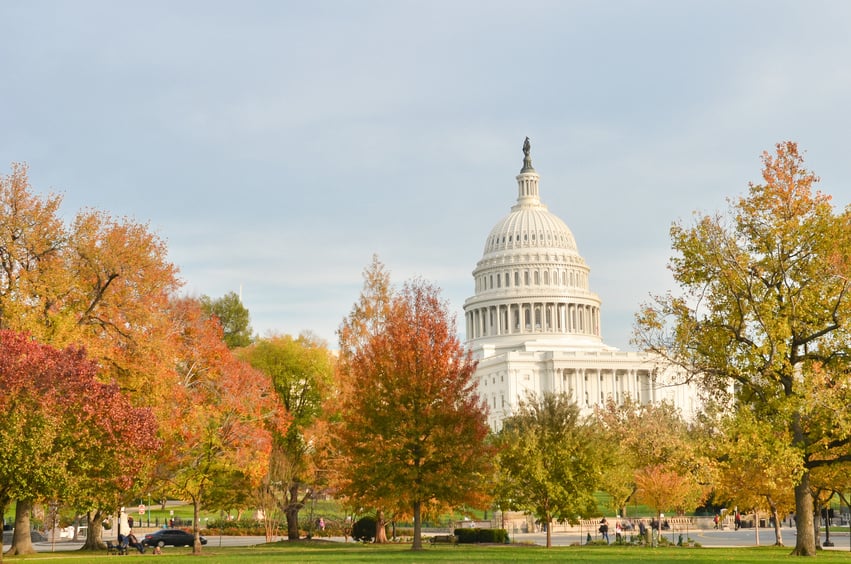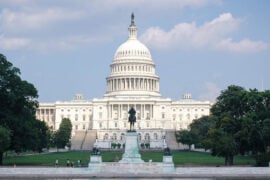In brief
On January 6, 2021, Treasury and the Internal Revenue Service (IRS) issued final regulations (“Final Regulations”) relating to the credit for carbon oxide capture and sequestration under Code Section 45Q. These regulations finalize proposed regulations issued in May 2020 (“Proposed Regulations”). Congress enacted section 45Q in 2008 to incentivize the capture and disposal of carbon dioxide to prevent release into the atmosphere. Originally, the credit was available for carbon dioxide that was captured and either disposed of in secure geological storage or injected into an enhanced oil recovery (“EOR”) project. However, in 2018 Congress expanded the credit to also cover carbon monoxide and to cover additional methods to “utilize” captured carbon oxide.
In response to over 80 comment letters and a lengthy public hearing on the Proposed Regulations, the Final Regulations provide helpful clarification on several aspects of the credit, including the definition of “commercial market” for utilization of captured carbon oxide, a decreased recapture period for carbon oxide that is released into the atmosphere, measurement of captured carbon oxide in lifecycle analysis (“LCA”) reports, and definitions of “qualified facility” and “carbon capture equipment.”
Now that final regulations are out, and other guidance is in place to provide clarity on the credit (see Notice 2020-12, which provides a helpful definition of “beginning of construction” for purposes of building new qualified facilities and carbon capture equipment, and Rev. Proc. 2020-12, which provides a safe harbor for partnerships to make valid allocations of the section 45Q credit under section 704), we expect that investors and developers will be able to move forward with beginning construction on qualified facilities and carbon capture equipment and fully utilize the credit for a wide variety of projects.
45Q Credit Overview
Section 45Q provides a credit in a specified dollar amount per metric ton of qualified carbon oxide (both carbon dioxide and carbon monoxide) that is captured and sequestered by injecting the carbon oxide into secure permanent storage in underground geological formations, injecting it into EOR projects, or utilizing it for any purpose for which a commercial market exists.
The amount of the credit depends on the date the carbon capture equipment is placed in service and how the captured carbon is sequestered. For carbon oxide captured using equipment placed in service on or after February 9, 2018, the credit is available for a 12-year period beginning on the “placed-in-service” date of the qualified facility and carbon capture equipment. Taxpayers can claim credits for qualified facilities and carbon capture equipment placed in service before February 9, 2018, but (1) can receive credits only at a reduced rate per metric ton, and (2) are subject to a national cap of 75 million metric tons of captured carbon dioxide. Under the Consolidated Appropriations Act of 2021, signed into law on December 27, 2020, taxpayers must begin construction of qualified facilities containing carbon capture equipment before January 1, 2026 to qualify for the credit. Depending on when the qualified facility and carbon capture equipment is placed in service and for what end purpose the taxpayer is using the captured carbon oxide, taxpayers may receive a credit between USD 10 and USD 50 per metric ton of carbon oxide, with more credits available for geologically secured carbon oxide and less for EOR and utilization projects.
The Bipartisan Budget Act of 2018 (“BBA”) expanded the tax credit for capturing and sequestering carbon oxide (“45Q Credit”) to carbon oxides used for other industrial purposes. These other purposes include “the use of such qualified carbon oxide for any other purpose for which a commercial market exists (with the exception of use as a tertiary injectant in a qualified enhanced oil or natural gas recovery project), as determined by the Secretary.”
Broad Definition of “Commercial Market”
The Final Regulations define commercial market as “a market in which a product, process, or service that utilizes carbon oxide is sold or transacted on commercial terms.” While the regulations do not provide guidance on what it means for carbon to be “sold or transacted on commercial terms,” it is not limited to public markets, and taxpayers can certify on Form 8933 that a commercial market exists for captured carbon oxide. The Final Regulations do not provide any list of products and markets that qualify or do not qualify under the commercial market test.
Meaning of LCA for “Utilization”
Taxpayers must use LCA reports to show the amount of carbon oxide that is utilized in a commercial market. The Final Regulations retain the approach in the Proposed Regulations, requiring taxpayers to prepare and document LCAs in conformity with ISO standards, to verify the correctness of the LCA with an independent qualified third-party expert, and to submit the LCA for preapproval by the IRS and the Department of Energy (“DOE”).
Though helpful in some aspects, the Final Regulations did not provide all of the guidance commenters requested on LCAs, and in some cases provided unfavorable rules. Commenters noted that not allowing taxpayers to claim 45Q Credits before approval of the LCA would potentially cause decreased utilization of the captured carbon oxide in commercial markets and would potentially hamper equity investments in joint ventures seeking to monetize the credits. Treasury and the IRS noted these concerns, stating that separate guidance would address them, but they did not commit to any further positions.
The Final Regulations also provide that the LCA must demonstrate a net reduction in carbon equivalents, which taxpayers can demonstrate by either “displacing” or “capturing and permanently isolating” carbon emissions from the atmosphere. The guidance does not address with any particularity how the report can demonstrate this net reduction, or whether there is any meaningful difference between “displacement” and “isolation.”
Finally, the Final Regulations “use the cradle-to-grave boundary, which considers the entire product life cycle, including all the phases from raw material extraction until end-of-life,” with limited exceptions as provided in the ISO standards. Similarly, the regulations state that “all stages of product and feedstock production and distribution, from feedstock generation or extraction through the distribution and delivery and use of the finished product to the ultimate consumer” are included in the LCA. Practically, this appears to “punt” the question of whether a given product constitutes a qualifying use of carbon to the LCA report.
Contractual Arrangements
Section 45Q(f)(3)(A) provides different rules for who can claim a 45Q Credit, depending on whether the taxpayer is using carbon capture equipment placed in service before February 9, 2018 or after. For equipment placed in service before that date, the person who “captures” and “physically or contractually ensures” the storage, injection, or utilization of the carbon oxide can claim the credit. For equipment placed in service after that date, the person who “owns the carbon capture equipment” and physically or contractually ensures the storage, injection, or utilization of the carbon oxide can claim the credit.
The Final Regulations confirm that in either case, a contractor may qualify as a credit claimant, subject to several limitations. First, the contractor may not sub allocate credits to subcontractors on the project. Second, contracts between contractors and subcontractors must conform to the same standards as “binding written contracts” under the Final Regulations. Third, existing contracts must be revised within 180 days after the publication of the Final Regulations in the Federal Register to conform to the binding written contract rules. Fourth, both the electing taxpayer (i.e., the party electing under Section 45Q(f)(3)(B) to transfer the credit to the contractor) and the contractor must fill out Form 8933, provide the other party with a copy of their own Form 8933, and attach the other party’s Form 8933 to their own tax return. Failure to strictly comply with these reporting requirements results in complete disallowance of the credit (except that failure of the non-credit claimant party to attach Form 8933 to their return will not cause the credit claimant to be denied the credit).
Carbon Capture Equipment and Qualified Facility
Section 45Q does not define the term “carbon capture equipment.” The Final Regulations provide that carbon capture equipment includes all components of property that are used to capture or process carbon oxide until the carbon oxide is transported for disposal, injection, or utilization. This definition does not include components used only to transport captured carbon oxide to the disposal, injection, or utilization end point. The Final Regulations apply a use-based approach, rather than a list-based approach, that determines whether the component is actually being used in the capture process. The Final Regulations also remove the list of qualifying and excluded components that were in the Proposed Regulations.
Aggregation of Qualified Facilities
Notice 2020-12 allows taxpayers to aggregate physically separate facilities for purposes of meeting the January 1, 2026 beginning of construction requirement in Section 45Q(d)(1). The Final Regulations expand this favorable rule, allowing taxpayers to apply the factors in Notice 2020-12 to aggregate qualified facilities for purposes of meeting the minimum capture requirements in Section 45Q(d)(2). An exhaustive discussion of the Notice factors is beyond the scope of this article, however taxpayers should be aware that where facilities are under common ownership, share a common location, are built pursuant to the same contract, or share common equipment for capturing carbon oxide, taxpayers may be able to aggregate those facilities under the Final Regulations. If so, taxpayers may be able to combine qualified facilities that capture less than 500,000 metric tons of carbon oxide for purposes of making the placed-in-service election under Section 45Q(f)(6)(A). This would enable the taxpayer to receive the higher credit amounts for carbon oxide captured by carbon equipment placed, or deemed placed, in service after February 9, 2018.
Recapture
To the extent qualified carbon oxide ceases to be captured, disposed, or used as an injectant in an EOR project, the 45Q Credit must be recaptured. The Proposed Regulations provided a five-year recapture period, beginning on the date of the first disposal, injection, or utilization of the carbon oxide and ending on the earlier of: (1) five years after the last year the taxpayer claimed a 45Q Credit, or (2) the date monitoring ceases under ISO standards.
Commenters submitted numerous letters stating the recapture period should be anywhere from one year to 99 years. In response, the Final Regulations reduce the recapture period from five years to three years and state that a three-year period sufficiently accounts for any risk of carbon oxide leaking out. This is a favorable change for taxpayers concerned about obtaining equity investments in carbon capture equipment or qualified facilities. In addition, the three-year recapture period is more favorable than other tax credits, including the Section 45 production tax credit and Section 48 investment tax credit, both of which have a five-year recapture period.
The Final Regulations also reaffirm that recapture is measured on a LIFO basis, by multiplying the taxpayer’s applicable tax rate for the last three taxable years by the net amount of leaked qualified carbon oxide. The “net” amount means the excess of leaked carbon oxide over the amount secured or injected in that year.
Finally, and most importantly for taxpayers applying the “commercial market” test, the recapture mechanism does not apply to “utilized” carbon oxide, because the LCA already determines whether captured carbon oxide will be “displaced” or “permanently isolated” during its lifecycle. This is another example of the regulations relying heavily on the LCA analysis to determine qualification.
Applicability Date and Next Steps
The Final Regulations are effective for taxable years beginning on or after the date the regulations are published in the Federal Register. Taxpayers may choose to apply the Final Regulations to taxable years beginning on or after January 1, 2018, provided they apply the regulations in their entirety.
While helpful in many respects, the Final Regulations have left outstanding questions regarding the preparation of LCA reports for utilization of captured carbon oxide, the review process and timeline for receiving IRS and DOE approval of the reports, and what will be the requirements on Form 8933 to certify that a “commercial market” exists. Nevertheless, the Final Regulations provide welcome guidance on a number of other key issues, and should prove useful for equity investors and taxpayers with existing structures in place to obtain the benefits of 45Q Credits.



